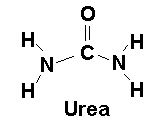- Joined
- Jan 31, 2008
- Messages
- 328
- Reaction score
- 5
Hi friends, let's continue the closed thread here. No promoting any materials here, just prop some in doubt questions as our exam is approaching fast.
Hi friends, let's continue the closed thread here. No promoting any materials here, just prop some in doubt questions as our exam is approaching fast.



anybody interested in group study please pm me.
I think the answer might be
4. structural relation to D glyceraldehyde
hey can u explain the answer with the structural formula..
one with R n chain..
thanks..
ok i have a question...

I couldn't find any other explanation other than this :
"The ability of some compounds to rotate the plane of polarized light because of the asymmetry of the molecule. If the plane of light is rotated to the right, the substance is dextrorotatory and is designated by the prefix (+); if laevorotatory (rotated to the left), the prefix is (-). A mixture of the two forms is optically inactive and is termed racemic.
Sucrose is dextrorotatory but is hydrolysed to glucose (dextrorotatory) and fructose, which is more strongly laevorotatory so hydrolysis changes optical activity from (+) to (-); hence, the mixture of glucose and fructose is termed invert sugar.
(The obsolete notation for (+) was d- and for (-) was l-; this is distinct from D- and L-, which are used to designate stereo-isomerism; see D-.)"
Anyone else can help ?
It depends. Sometimes I will change the subject if I find myself very difficult to focus on one subject.
Sometimes I study them together. For example, I will study the kidney histology, physiology and pathology together. Sometimes I find it is fun and easier.
Make a good and realistic plan is the key.
All posterior teeth have lingual heights of contours in the junction of the cervical to the middle 1/3rd of the crown , except one..
1. Mandi 1st premolar
2. Mandi 2nd pm
3. maxi 1st pm
4. maxi 2nd pm
5. maxi 1st molar
any answer?
hi all
from wher do u ppl see diagrams for anatomy-esp-gastrointestinal anatomy....those peritoneum etc are confusing...if i go in bits and pieces...is ther any consolidated pic with all the structures....suggest pls...thank u -i went thro wikipedia...but not satisfactory...
guys, can you help me with this ? I went to different sources and got different answers...
Which one forms the floor of carotid triangle ?
One source said : Omohyoid, - i think omohyoid is a muscle which demarcates boundry of triangles..not the floor.
the others : Thyrohyoideus, hyoglossus, and constrictors pharyngis medius and inferior. - correct answer.
another one : Middle and lower pharyngeal constrictors (mpc & ipc) - situated more posteriorly... Not possible for carotid triangle.
thanks!
Friend of mine asked me to stop with lectures and reading books, start to memorize in an out the decks and asda exams booklet. Do you agree with this ? How long does it take to do these decks and booklets ? 2 months ? I am asking because I am only 2 months away, will be cut with 10 days cruise vacation with family in April. Suggestions will be accepted. Me, for he first time is so not looking forward for vacation with family
I have a few ques...which i haven understood at all..pls help me..
1}which of the foll 2ndary messengers is generated when phospholipase C is activated by the G alpha protein when it cleaves PIP2 ??
A) DAG & IP3-----answer
B) cGMP & cAMP
C) calmodulin & DAG
D) cAMP & DAG
2}Molecule not a precursor for gluconeogenesis??
A) pyruvate
B) Acetyl co enzyme A ---answer
C) lactate
D) glycerol
E) oxaloacetate
3} Pts plasma osmotic pressure= 29 mmhg
glomerular capillary press= 68 mmhg
hydrostatic press in bowmans capsule= 19mmhg
which of the foll. is pts net glomerular filtration press??
A) 10 mmhg
B) 20 mmhg---answer
C)39 mmhg
D) 49 mmhg
E) 58 mmhg
pls give the answer with explanations..
thanks..


can anyone give me answer for it?? I want EXPLANATION also....
and yes.. happyk9 i would also like to know the explanation of the previous answers... kindly pl tell us...
hiFriend of mine asked me to stop with lectures and reading books, start to memorize in an out the decks and asda exams booklet. Do you agree with this ? How long does it take to do these decks and booklets ? 2 months ? I am asking because I am only 2 months away, will be cut with 10 days cruise vacation with family in April. Suggestions will be accepted. Me, for he first time is so not looking forward for vacation with family


can anyone give me answer for it?? I want EXPLANATION also....
and yes.. happyk9 i would also like to know the explanation of the previous answers... kindly pl tell us...
Here it is:
answer is correct.. Protoplast. thanks buddy.. that was good info...
plz anyone interested in studyg biochem with me , its really tough confusing reply me here or at [email protected] thanx
all d best
Is it 1 ? or 4 ? 4 is right in skin cancer due to the UV rays, when you remove, it comes back.
which of the following describes major effect of sickle cell anemia?
A. absence of biphosphoglcerate binding of Hb
B. Substitution of 2 proximal hisdine.
C. Decresed solubiity of deoxy form of Hb
D. A P50 valur for Hb similar to that of myoglobin
E. Decresed number of subunits in Hb
